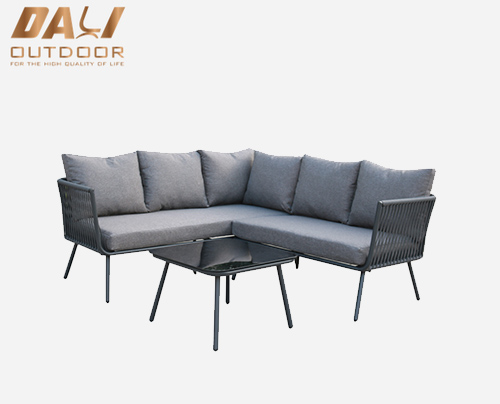Weather resistance is a crucial factor when selecting patio furniture, as it determines how well the furniture can withstand exposure to various outdoor elements. Here are some general tips on checking the weather resistance of patio furniture and how to maintain and clean outdoor furniture:
Checking Weather Resistance:
Material Selection:

Choose materials known for their weather resistance, such as aluminum, teak, synthetic wicker, polyethylene (polywood), stainless steel, and certain types of plastic.
Powder-Coated Finishes:
For metal furniture, look for a powder-coated finish. This protective coating enhances durability and helps prevent rust or corrosion.
Weather-Resistant Fabrics:
If the furniture includes cushions or upholstery, ensure that the fabrics are specifically designed for outdoor use. Outdoor fabrics should be resistant to UV rays, moisture, and mildew.
Sealed or Treated Wood:
If opting for wooden furniture, consider sealed or treated wood, such as teak or eucalyptus, which naturally resist decay and insects.
Waterproofing or Sealants:
Apply waterproofing or sealants to certain materials, like wood or concrete, to enhance their resistance to water damage.
Elevated Design:
Furniture with an elevated design, allowing air circulation underneath, can be more resistant to moisture-related issues.
Maintaining and Cleaning Outdoor Furniture:
Regular Cleaning Routine:
Establish a regular cleaning routine to remove dirt, dust, and debris. This helps prevent the buildup of substances that can cause damage over time.
Mild Soap and Water:
Use a mild soap and water solution for cleaning most outdoor furniture. Avoid harsh chemicals, as they can damage finishes and fabrics.
Soft Bristle Brush:
Use a soft bristle brush or sponge for scrubbing. Avoid abrasive brushes that can scratch surfaces.
Rust Prevention:
For metal furniture, inspect for signs of rust. If rust is present, gently scrub it off and apply a rust-resistant primer and paint.
Storing Cushions:
If possible, store cushions indoors or in a weather-resistant storage box when not in use to prevent mold and mildew.
Furniture Covers:
Invest in weather-resistant furniture covers to protect outdoor furniture during extended periods of non-use or during harsh weather conditions.
Avoid Harsh Conditions:
Consider bringing certain types of furniture indoors or into covered areas during extreme weather conditions, such as heavy storms or winter months.
Inspect and Tighten:
Regularly inspect furniture for any loose screws, bolts, or connections. Tighten or replace hardware as needed.

 English
English España
España عرب
عرب 简体中文
简体中文





